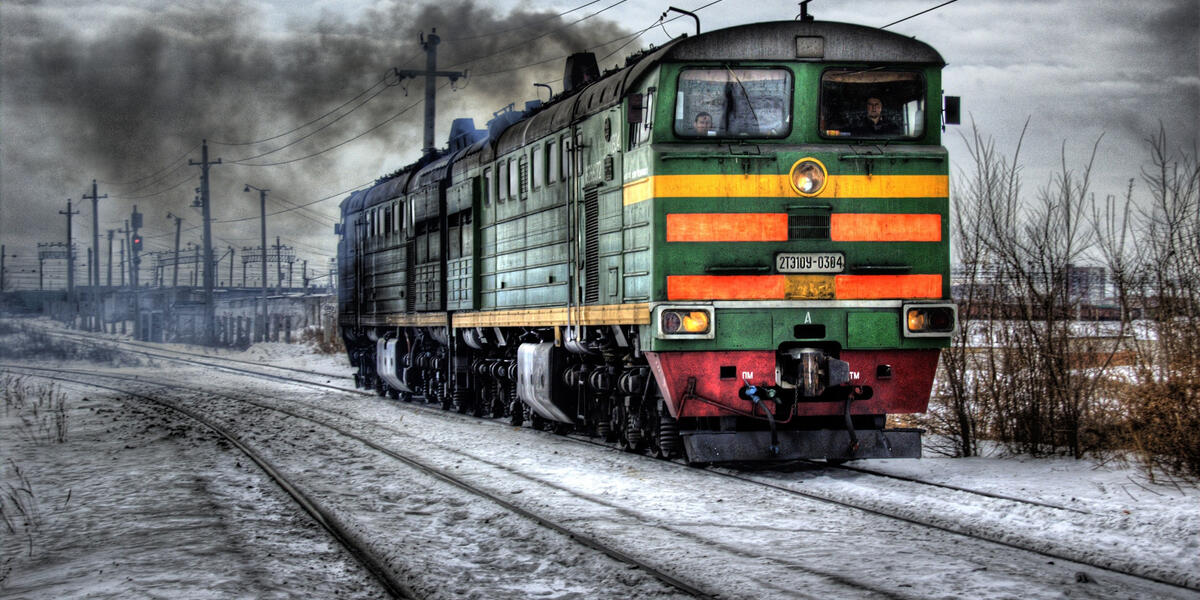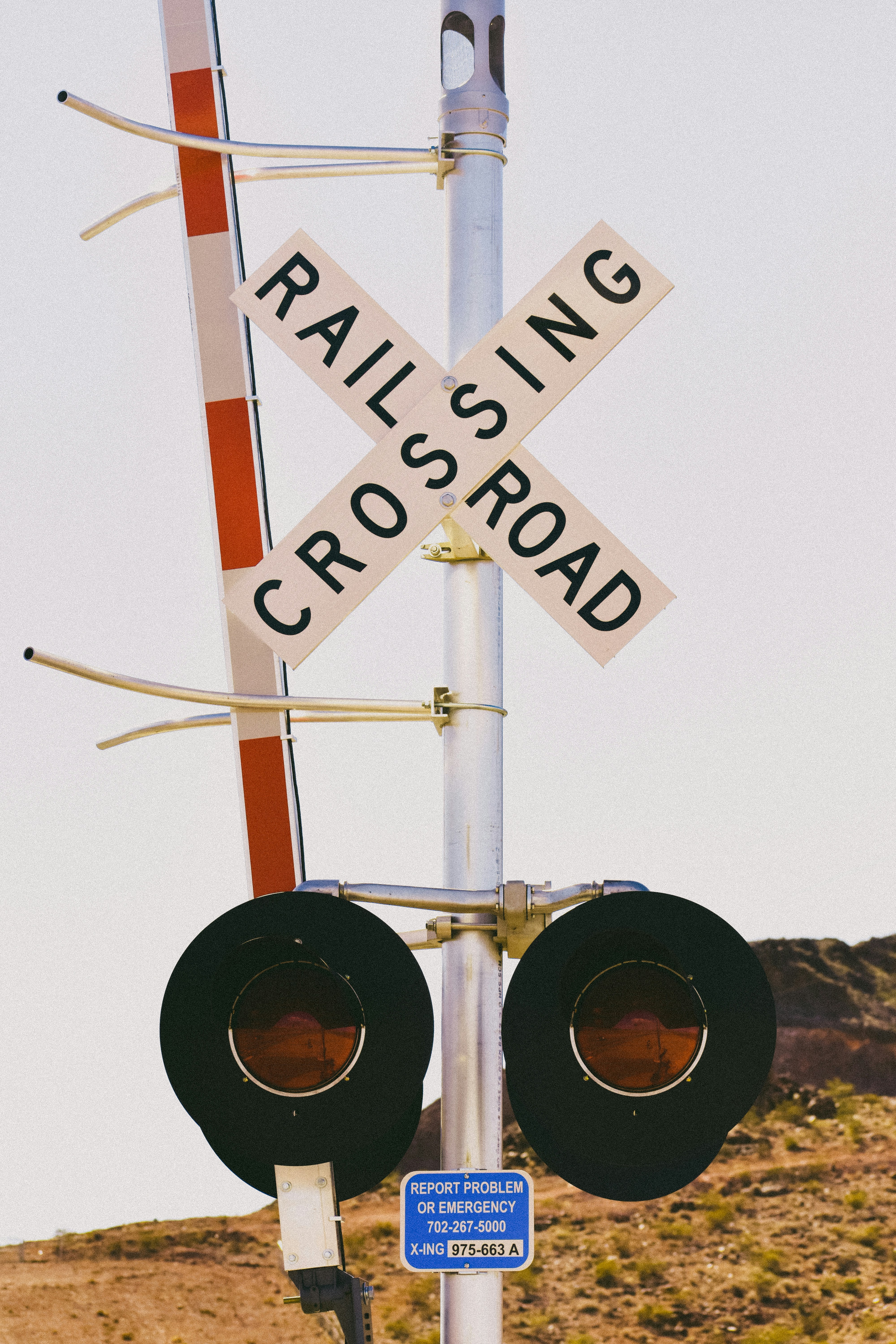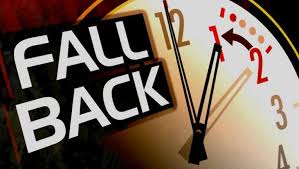Ever think about how many times a day you cross a train track on your route? Most of the time, we take for granted that no train is coming and proceed to cross the tracks without much thought.
Take the time to download the Driver’s Guide and complete the safety quiz for professional drivers.
Safety Tips for Truck Drivers
Five ProDriver Steps to Safely Cross Railroad Tracks
-
Eliminate distractions. Turn off noisy fans and radios. Look and listen carefully for trains.
-
Stop safely. Stop no closer than 15 feet and no farther than 50 feet from the crossing.
-
Look carefully in both directions for approaching trains before crossing. If your view is obstructed, do not attempt to cross. Look both ways twice before proceeding.
-
Know the law. Trucks carrying hazardous materials must stop at all crossings unless an “Exempt” sign is posted.
-
Cross without hesitation. Once you begin crossing, continue without stopping. If your vehicle becomes stuck or stalls on the tracks, evacuate immediately and call the number on the blue and white sign. Provide the crossing identification number so the railroad can locate you.
Note: Refer to state and local laws, as well as company policies, for additional information.
Know Your Railroad Crossing Signs and Signals
Additional Recommendations for Navigating Train Crossings:
-
Trains and trucks don’t mix. Never race a train to the crossing — even if you tie, you lose.
-
The train you see is closer and moving faster than it appears. Wait for it to pass completely before crossing.
-
Be aware that trains cannot stop quickly. A freight train traveling at 55 mph can take a mile or more (about 18 football fields) to stop after brakes are applied.
-
Never drive around lowered gates — it’s illegal and deadly. If you suspect a signal malfunction, call the 1-800 number posted near the crossing or contact local law enforcement.
-
Do not get trapped on the tracks. Proceed only when you are certain you can completely clear the crossing. Remember, trains are approximately three feet wider than the tracks on both sides.
-
If your vehicle stalls on the tracks and a train is approaching, exit immediately and move away from the tracks in the direction from which the train is coming. This prevents injury from flying debris. Then call local law enforcement for assistance.
-
At multiple-track crossings, always check for a second train coming from either direction before proceeding.
-
Only cross at designated crossings. Look both ways and cross quickly without stopping. Never stop closer than 15 feet from the rails.
-
Always expect a train! Freight trains do not follow set schedules.
-
If you get stuck on the tracks, exit your vehicle, call the 800 number posted at the crossing, or contact local police to alert the railroad of your position.
(Information provided by Operation Lifesaver.)
About Operation Lifesaver
Operation Lifesaver, Inc. is a national non-profit safety education organization dedicated to eliminating deaths and injuries at railroad crossings and along railroad rights-of-way. The organization operates in all 50 states with trained and certified presenters who provide free safety talks to community groups, school bus drivers, truck drivers, and student drivers.
For more information, or to request a free safety presentation, visit www.oli.org.
New Operation Lifesaver Video Warns: Filming on Train Tracks Is Illegal and Deadly!
With the explosion of social media, there have been several tragic incidents involving people making videos near railroad tracks. Operation Lifesaver, Inc. (OLI) has released a new animated video warning amateur filmmakers and smartphone users of the dangers and illegality of using train tracks for videos.
This new video is part of a larger campaign highlighting the dangers of illegal and unsafe behavior around train tracks.
🔗 Learn more here.
Time to Fall Back: Daylight Saving Time Changes on Sunday!
Daylight Saving Time will “fall back” at 2:00 a.m. on Sunday, November 2nd.
Make sure all drivers are aware of this change. Remind route drivers that daylight patterns will
shift, and intersections or streets may present different challenges due to the sun’s position. Even a one-hour change can impact visibility and driving conditions.
How Electronic Logging Devices (ELDs) Handle Daylight Saving Time
Since ELDs have been federally mandated (as of 2017), most systems automatically adjust for DST changes. Regardless of “springing forward” or “falling back,” drivers must still comply with DOT/FMCSA Hours of Service (HOS) regulations.
E-Log DST Examples:
-
If you work from 1 a.m. to 10 a.m., your log should show nine hours worked — even though the clock falls back one hour.
-
If you begin a 10-hour break at 10 p.m. Saturday, it will end at 7 a.m. Sunday (instead of 8 a.m.) due to the time change.
-
You must still complete a full 10-hour break and follow all HOS rules.
-
The same applies to the 34-hour restart — you’ll reach it an hour earlier, but a full 34 hours is still required.
How DST Affects ELD Logs:
-
Duty statuses before the change will show “Daylight Time” (EDT, CDT, etc.), while those after will show “Standard Time” (EST, CST, etc.).
-
On November 3rd, your log will total 25 hours.
-
For tablets with HOS functionality, the system will automatically adjust one hour back at 2 a.m. according to your home terminal’s time zone.
-
For paper logs, note the change by writing “Fall Time Change” in the remarks section.









